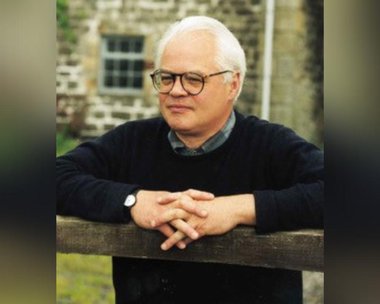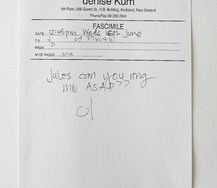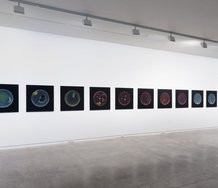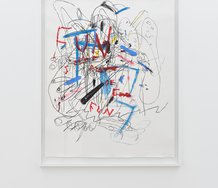John Hurrell – 29 April, 2023
In August 1981, Hunter—with help of others—presented in the Christchurch Arts Centre and Robert McDougall Art Gallery, a remarkable, week-long, performance and installation event/symposium called ANZART (Australia New Zealand art encounter) with funding from arts councils on both sides of the Tasman. This exchange was then an innovative idea, and Hunter envisaged a series of such projects that revolved around the notion of the littoral, the zone where Art and Life overlapped, like land and sea on a beach.
Ian Hunter obituary
A couple of days ago a friend casually mentioned to me the death of one of the most significant curators ever to work in Aotearoa. Ian Hunter was an Irish curator, exhibitions officer and artist with family connections in the NZ wine industry. He worked in Wellington’s National Gallery in the early eighties alongside other staff such as performance artist Andrew Drummond.
In August 1981 Hunter—with help of other artists such as Drummond, Stuart Griffiths, and Max Hailstone—presented in the Christchurch Arts Centre and Robert McDougall Art Gallery, a remarkable, fortnight-long, performance and installation event/symposium called ANZART (Australia New Zealand art encounter) with funding from arts councils on both sides of the Tasman. This exchange was then an innovative idea, and Hunter envisaged a series of such projects that revolved around the notion of the littoral, the zone where Art and Life overlapped, like land and sea on a beach. It presented what is often called ‘post-object art.’ Exhibition variations later occurred in Hobart, Auckland, Freemantle and Edinburgh.
Amongst the New Zealanders who participated in the first one were Pauline Rhodes, Colleen Anstey, From Scratch, critic Wystan Curnow, Di ffrench, Andrew Drummond, Terrence Handscomb, Warren Viscoe, Peter Roche and Linda Buis, Jacqueline Fraser, Morgan Jones and Will Collinson. Amongst the Australians were Mike Parr, Bonita Ely, Dom de Clario, Steve Turpie, David Jensz and Wendy Teakel, Graeme Davis, Ray Woollard, Claire Ferguson, Dale Frank, Jacek Grzelecki, Geoff Lloyd, Robert Owen, and visiting Europeans Marina and Ulay Abramovic. About forty artists participated in total. There were also satellite exhibitions in venues like the CSA.
Later in his life (around the turn of the millennium) Hunter moved to the Lake District in Cumbria in NW England, and with his wife Celia, became preoccupied with the last architectural installation (in Ambleside) of the great Swiss artist Kurt Schwitters, while also being involved in using art exhibitions to draw attention to the economic plight of the local sheep farmers.
The Christchurch ANZART project is immensely interesting now because of the political shifts in art communities that have occurred globally since. In my view, there has been a lessening of, a deterioration in, emotional stridency.
Currently, with the promotion of the notion of ‘safe spaces’ in art galleries there is a wide fear of any form of confrontation or clash of ideologies—even if calculatedly planned or anticipated. The concept of fiery public debate or noisy exchange of rival views (be they political, racial, sexual, religious, or anything else) within designated ‘forum’ art spaces has become abhorrent. A quiet, colourless environs—guided by assumptions of what is ‘healthy’—is now desired, with repressive sanitising templates put in place to create an ambience that is gormless and insipid. Contemporary art has become non-dangerous, inoffensive and excruciatingly dull.
John Hurrell
Recent Comments
Barry Thomas
I started the Artists Co-Op in Wellington with Ian and others in March 1978. Ian was hanging around my Vacant ...
andrew drummond
Dear John, Just to say Thankyou for the obituary for Ian Hunter. There a few details that need including, as ...

 Advertising in this column
Advertising in this column Two Rooms presents a program of residencies and projects
Two Rooms presents a program of residencies and projects



This Discussion has 2 comments.
Comment
andrew drummond, 5:19 p.m. 5 May, 2023 #
Dear John,
Just to say Thankyou for the obituary for Ian Hunter. There a few details that need including, as Ian was involved in art projects throughout the 70s through to the 80s in Wellington and his last project there was, F1 at the old Thompson and Lewis drinks factory. This was an important launching pad for later Anzart projects in Edinburgh and Auckland.
Also missing from the names at the Anzart in Christchurch is the name of John Cousins who also worked on the organisation and later was a participant in Anzart in Edinburgh.
I fully concur with your last paragraph that illustrates the capture of the art world by political correctness and the sterilisation of the products seen in galleries throughout NZ, and the greater art world.
Some 20 years ago I started to withdraw my practice from galleries and funding organisations that had become personal fiefdoms for pretentious curators and compliant artists. Long live the endeavour of difficulty and chaos in the struggle for truth and beauty.
Andrew Drummond
PS, I registered but nothing came through above, so if you could publish
Thankyou Andrew
Barry Thomas, 3:45 p.m. 15 June, 2023 #
I started the Artists Co-Op in Wellington with Ian and others in March 1978. Ian was hanging around my Vacant Lot of Cabbages (January 4 - June 21 1978) and he had also connected with our own national arts festival earlier in September 1977. I was the Co-Op's first director.
Several good initiatives, art and "offspring" came out of the Artists Co-op:
The Co-Op was the first organisation to employ our own 14 artists on the then government's TEP programme. This directly inspired Rohesia Hamilton Metcalfe to start the biggest employer of artists: Summer City under WCC. (see https://en.m.wikipedia.org/wiki/Summer_City_(Wellington)).
We ran several large gatherings, intervention happenings, contributed our artists to the Summer City programme and supplied artists' studios all at very reasonable rates. We attempted international art hook ups and Andrew Drummond, Sam Hunt, and Nick Spill contributed to the Co-Op’s legacy performing at our sound baffled varnished, circular performance space. This was a vacant wool store of some 33,000 square feet... so big we had to ride bikes to get from one end to the other. Performers at our gigs also included the very first outing of the 'Wide mouthed Frogs' the all girl band that led directly to 'The Crocodiles'.
We delivered one magazine 'Sheepmeat' (see National library) which Ian largely wrote.
We also successfully received QE2 funding for airfares to contribute to our collaborative crashing of the 3rd Sydney biennial 1979 which also included Evan Webb and Pauline Rhodes, Don McGlashen and is very well documented in QE2's "Action magazine". 22 X uninvited kiwi artists crash the high art gathering across the ditch. Including Peter Roche, Gary McCormack, Jill Stoker.
Artists Co-Op members included Ian Hunter, Eva Yuen, Gaylene Preston, Jillian Stoker, Stuart Porter, Justin Keene, Anthony McCarten, Gerard Crewdson, yours truly, Terrence Handscomb, Ross Boyd, Mark Hantler among many others.
Lesser known are some of Ian's own, mainly conceptual and intervention artworks... Dropping a sachet of salt into lake Michigan springs to mind.
He didn't really have a political bone in his body but he was a determined leader in artist collaborations and especially conceptual art events at our artists co-op, F1 and others.
I felt like I had found something of a brethren spirit in the conceptual art wilderness when Ian appeared ... So many New Zealanders owe something to his drive in bringing conceptual art into the public vista.
Kia kaha Ian
Participate
Register to Participate.
Sign in
Sign in to an existing account.